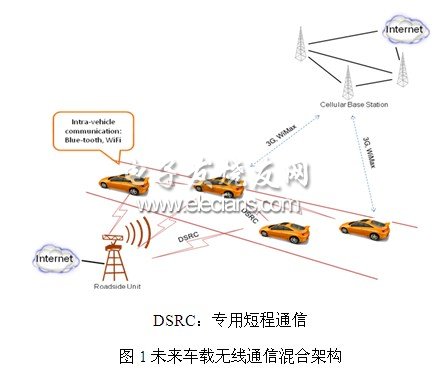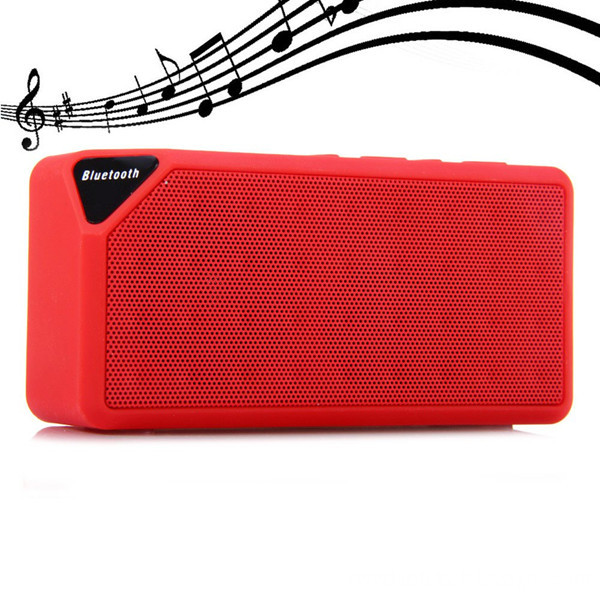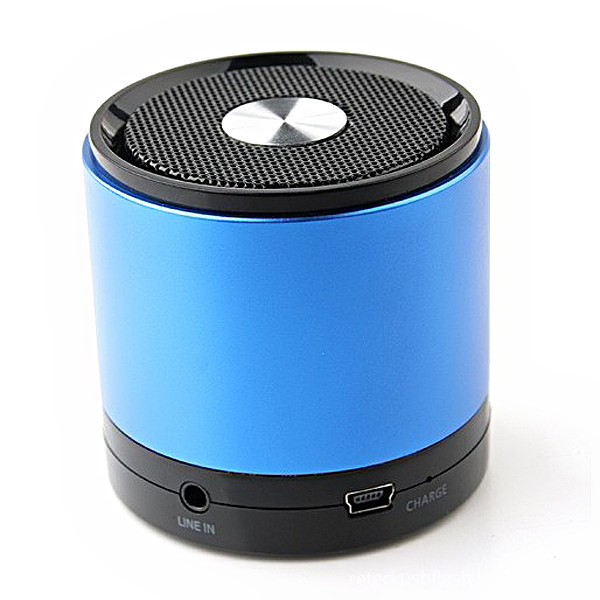Application analysis of in-vehicle Internet of Things
1 Vehicle Internet of Things
In-vehicle Internet of Things is an emerging technology that can greatly improve the safety and efficiency of future transportation systems and connect vehicles to computer networks. The in-vehicle Internet of Things can establish wireless communication between moving vehicles and wireless communication between passing vehicles and roadside base stations. Using the multi-hop method, the vehicle-mounted network allows two vehicles outside the signal range to establish a communication connection. The vehicle-mounted network will become an important part of the future intelligent transportation system.
The current intelligent transportation system relies heavily on pre-deployed infrastructure. For example, electromagnetic sensors embedded in the road surface, traffic cameras deployed at major road intersections, and radio frequency tag (RFID) readers installed at highway toll gates. Generally, a typical process of collecting and publishing traffic information is as follows: First, the road surface sensor detects the speed and density of the traffic flow, and then uploads it to the urban transportation center. After data processing, the flow report can be transferred to the user's mobile phone through the cellular network. Disseminating location-related information in this way is an expensive and inefficient way, because the actual distance between the information source and the information consumer is usually only a few hundred meters away.
The short-range communication capability of the vehicle-mounted network will change the communication mode of this traditional intelligent transportation system, and help the production, dissemination and consumption of information in a more direct way.
Essentially, the Internet of Vehicles is a huge wireless sensor network. Every car can be regarded as a super sensor node. Usually a car is equipped with internal and external thermometers, brightness sensors, one or more cameras, microphones, ultrasonic radar, and many other equipment. In addition, future cars will be equipped with an on-board computer, GPS locator, and wireless transceiver. This enables wireless communication between cars and between cars and roadside base stations. This unprecedented wireless sensor network expands the computer system's ability to perceive and control the entire world, and allows information to be generated and shared locally without involving huge infrastructure.
The car and vehicle network in the future provide a series of applications for people. The application of vehicle network can be divided into 4 categories.
1.1 Security applications
Safety applications include collision warning, electronic street signs, traffic light warning, online vehicle diagnosis, and slippery road detection. Usually such applications use the real-time characteristics of short-range communications to provide drivers with immediate warning.
1.2 Application of efficiency
Efficiency applications include urban traffic management, traffic congestion detection, route planning, highway toll collection, and public transportation management. Such applications are dedicated to improving the efficiency of public and personal travel.
1.3 Commercial applications
Business applications include location-based services, which will bring people huge business opportunities. There are many types of these commercial applications, such as the nearest restaurant, the cheapest gas station, and shopping mall promotion information. These possible commercial applications will bring new means of competition to the service industry.
1.4 Infotainment applications
Infotainment applications include video and music sharing, location-based restaurant reviews, carpooling, social networking, etc. In fact, some applications of infotainment, such as Ford SYNC [1] and Kia UVO, have become a compelling bright spot in the current automotive market. The networking of infotainment systems will be an inevitable trend.
In the development of in-vehicle networks, four types of participants will play an active role. The four types of participants are the government, auto manufacturers, local retailers and consumers. Traditional intelligent transportation systems are led and invested by governments of various countries. A few other geographic information system (GIS) companies, such as Google, Garmin, and TomTom, also participate in the collection and release of transportation information. However, the future in-vehicle network will attract more participants and enable them to obtain huge commercial profits from the in-vehicle network. First, automakers will be happy to develop cars equipped with in-vehicle networks, which will enhance the safety of cars and provide a richer in-car entertainment system, thereby further enhancing the competitiveness of their cars. The electronicization of automobiles is an inevitable trend. The electronicization of security systems and infotainment systems are the two main aspects of the process. The Ford SYNC in-vehicle infotainment system is a very successful example. Secondly, local retailers and service providers will also be very interested, and the in-vehicle network will easily disseminate their promotional information and promote their services. Car network will bring fierce business competition. Finally, there is no doubt that these enhanced security, improved efficiency, cheap and good-quality goods, rich entertainment applications, etc. will attract more consumers and make them the ultimate beneficiaries.
2 Car Internet of Things wireless communication technology
Wireless personal area network (WPAN) has achieved great success in the field of consumer electronics (including automotive electronics). Ford's SYNC is a good example. It connects the driver's mobile phone to the car's audio system through Bluetooth technology, so the driver can play music or make phone calls through voice commands while driving. As mass production reduces costs, 802.11a / b / g wireless LAN technology has been widely used. Although 802.11a / b / g was not originally designed for the automotive environment, due to the advantages brought about by its widespread use, many researchers have conducted experiments in the automotive environment. The application conducted a series of experiments. The 802.11p and Dedicated Short-Range Communication (DSRC) standards expand the 802.11 standard to enable it to adapt to wireless communications in vehicle environments. 802.11p technology uses the 5.9 GHz frequency band and can establish short-range wireless communication between moving vehicles and between mobile vehicles and roadside base stations. Wireless metropolitan area network (WMAN), also known as WiMAX (ie IEEE 802.16), is another emerging technology. The wireless metropolitan area network can provide long-distance transmission in different ways, for example, communication between two nodes at fixed locations, and mobile node communication similar to cellular systems. However, by far, the most common in-vehicle communication technology is also based on cellular networks, commonly referred to as automotive telematics. GM's OnStar system and Ford's RESCU system are based on this type of technology. Some GIS companies, such as TomTom and Garmin, also use cellular networks to transmit real-time traffic information. Generally, cellular-based telematics is a paid service based on user subscriptions.

This paper believes that in-vehicle communication will be built on a hybrid architecture in the near future, as shown in Figure 1. In this hybrid architecture, long-distance communication technologies, such as cellular networks and WiMAX, can provide people with instant Internet access; and short-distance communication technologies, such as DSRC, Wi-Fi (ie 802.11a / b / g) It can provide real-time response guarantee for security systems and effective support for location-based information services.
This paper believes that VANET will play an important role in the future intelligent transportation system. The vehicle-mounted self-organizing network relies on short-distance communication technology to realize vehicle-to-vehicle and vehicle-to-roadside base station communication. Compared with the traditional infrastructure network, the vehicle-mounted self-organizing network has two main advantages: First, the vehicle-mounted self-organizing network has the advantages of low cost, easy deployment and operation. Consumers can enjoy the service without subscribing. Secondly, from a technical point of view, a lot of information transmitted in the intelligent transportation system has a strong position correlation. The vehicle-mounted self-organizing network can easily establish real-time or non-real-time short-distance communication for nearby vehicles.
3 Challenges faced by in-vehicle IoT
The unique characteristics of the vehicle-mounted network have brought unprecedented challenges. However, at the same time, these characteristics also enable people to think and solve problems from a different perspective.
The vehicle-mounted network is divided into 3 layers: link layer, network layer and application layer. Each network protocol layer faces different challenges.
3.1 Challenges facing the link layer
At the link layer, the main challenge is how to adapt the link layer protocol to the unique vehicle operating environment, so that the link layer can obtain the best performance. The link layer protocol includes three main design goals: responsiveness, reliability, and scalability. First, the link layer protocol needs to be able to respond quickly to channel conditions and vehicle mobility, and the reliability and scalability of the protocol also play an important role in safety-related applications. Some traditional link layer protocol design methods, such as wireless access point (AP) handshake, media access control (MAC) layer timeout management, address resolution protocol (ARP) timeout, etc., have been shown in the high-speed mobile vehicle environment Poor performance. These traditional design methods usually result in increased start-up delay, underutilized bandwidth, and unfair bandwidth allocation.
In fact, scalability and reliability affect and interact with each other to a certain extent. Reliable broadcasting technology is also one of the important research issues. Current reliable broadcasting technologies generally include repeat broadcasting, cooperative delivery, and adaptive transmission power. However, in general, reliability and scalability are still worthy of further research, especially for the application of vehicle safety systems, because end users have high requirements for vehicle safety systems.
3.2 Challenges facing the network layer
At the network layer, the main challenge is to establish a new routing model to promote the information dissemination of the vehicle network. Over the past 10 years, wireless self-organizing networks have been extensively studied. In particular, researchers have proposed many routing protocols with environmental adaptability for vehicle-mounted networks, such as MDDV and VADD. These protocols use the mobility of vehicles to improve the forwarding performance of data packets in the vehicle network environment through GPS positioning technology and digital map technology. Essentially, these protocols are designed to use data packets as the basic unit. The data packet remains unchanged throughout the forwarding process from source to destination. However, this model based on packet forwarding has been unable to adapt to information-centric application requirements. First, there are no clear data sources and destinations for some applications to forward routes. The information is generated by some nodes and then passed to other nodes. Secondly, the information will be modified in the process of transmission. For example, in the detection of traffic jams, each vehicle can generate a traffic congestion report, and this report can be merged with reports generated by other nearby vehicles. All vehicles driving towards the congested location are the recipients of these reports. In such applications, people do not know in advance when, where, and which vehicles will generate reports, nor do they know who will become the recipient. There are some routing protocols based on packet forwarding, such as multicast technology and location-based broadcasting technology, which can partially address the needs of such applications. However, in essence, people need a new routing model that can provide support for information-centric data transmission. This model will help to generate, merge, disseminate, and delete information.
3.3 Challenges facing the application layer
At the application layer, the main challenge people face is how to effectively represent, discover, store, and update information across the entire network.
Naming and addressing are the core issues of the vehicle network. How to effectively index real-world information to facilitate information storage and dissemination is a problem to be studied. This article believes that addressing will use a hybrid, multi-level approach, and real-world environmental information will play an important role. The naming and addressing policy has a significant impact on other protocols in the system, such as routing and information discovery. Due to the high mobility of vehicles, another challenge is how to dynamically map the vehicle's tag (ID) to a location-based address. For example, in location-based broadcasting, people need to know the list of all vehicles in a certain area. This problem has a very important impact on the entire hybrid network system. This paper believes that similar address resolution protocol / reverse address resolution protocol (ARP / RARP) can be implemented on vehicles and roadside base stations to help solve this problem.
Distributed data management is another challenging problem in vehicular networks. It includes a series of problems such as data replication, data deletion, and cache management. Traditional distributed data management assumes that geographically dispersed multiple servers are connected to the same network, which is no longer established in a vehicle-mounted self-organizing network. In essence, people can think of the vehicle network as a huge distributed database system, where each vehicle maintains a local database. Cars and workshops exchange data from time to time, thereby gradually updating the global database system. From a global perspective, inconsistency is inevitable. To this end, a research question is how to maintain a relatively consistent distributed database with minimal overhead.
4 Information dissemination in in-vehicle IoT
This article believes that the vehicle-mounted network is a distributed system centered on information. Information is generated, collected, and released at different locations on the network. One can divide information dissemination into two different levels: macro information dissemination and micro information dissemination. It is important to discover the system requirements with information as the center.
4.1 Macro information dissemination
Macro information dissemination refers to transferring information to a node or a group of nodes in a specific geographical area. The destination of information dissemination is a specific single node or a specified group of nodes in the network, or even a group of unknown nodes. The purpose of macro information dissemination is to reduce information transmission delay, reduce transmission overhead (including storage overhead and communication overhead), and increase the success rate of future queries (if the receiving node is unknown in advance). Research topics in macro information dissemination usually include information routing, data caching, and data fusion.
Information dissemination can be built on infrastructure or independent of infrastructure. Jedrzej et al proposed a P2P overlay network built on cellular network infrastructure. Vehicles establish a reliable link to the Internet through the infrastructure of the cellular network, and then these vehicles can share, discover and exchange non-secure application information in a P2P overlay network. However, since the services provided by the infrastructure are usually paid subscriptions, this actually limits the number of consumers. Compared with infrastructure-based network services, relatively inexpensive self-organizing network solutions are more attractive. On the other hand, most non-secure applications do not have strict real-time requirements. Therefore, a current research hotspot is to implement information dissemination of vehicle-mounted self-organizing networks in a delayed manner. Researchers have proposed some general delay-tolerant network routing protocols, such as popular routing.
In the vehicle-mounted self-organizing network, information dissemination, caching and fusion have been studied accordingly. However, in the vehicle-mounted self-organizing network, most types of information do not include any prior knowledge of the target vehicle, so delayed data propagation, data query, data cache, and data fusion are closely linked. Any vehicle may generate and issue an inquiry, and hope that its nearby vehicles can respond as soon as possible.
Traditional packet routing can no longer adapt to information-centric applications, and people need to establish a new information routing model. First, you need to define the destination for information routing. For most people, the destination of transmission is a virtual concept. It is limited by time, space and vehicles. In other words, the destination includes all vehicles that meet the time and space conditions at that time. There are two basic modes of information dissemination: pull mode and push mode. Pull means that a car regularly broadcasts the queries it is interested in and obtains data from neighboring vehicles. The push mode refers to that the vehicle purposely pushes the information into the surrounding vehicles, so that users interested in the information can get the information more conveniently. In the initial stage of the marketization of in-vehicle network technology, only a small percentage of vehicles have in-vehicle communication capabilities, and communication is limited to one hop, so the push mode is more important. When formulating a push model strategy, one must consider the potential impact of data caching and fusion. People can use heuristic surrounding information (such as driving direction, speed, frequented places, etc.) or social network information to predict and control the spread.
The Opportunity stands in front of you, the high-quality of Bluetooth Speaker, Waterproof Bluetooth Speaker, Wireless Bluetooth Speaker, Mini Bluetooth Speaker from Supplier & Manufacturer In China.
Bluetooth speaker refers to the built-in Bluetooth chip, Bluetooth connectivity to replace traditional wire connecting the audio equipment, by connecting your phone and tablet, notebook and other Bluetooth playback devices, to achieve the purpose of convenience.


Bluetooth speaker portable speaker to the main shape generally more portable, Bluetooth speaker technology with its convenient characteristics of people are being noticed and consumer acceptance, the common market of Bluetooth speakers, mostly mono speaker (single speaker unit), but also the emergence of a number of excellent sound quality multi-channel speakers (two or more speaker units).

Bluetooth speaker is very Multifunctional Portable Cool Fun Mini design. Bluetooth speaker also have a lot of functions such as Hands-free Calls, Bluetooth, Water Resistant, Shower Speaker, with Sucker and so on. It Support Bluetooth/Line in Audio connection, FM radio, TF card, Hards-free calling and so on.

Wireless Bluetooth Input of Bluetooth speaker Compatible with iPhone, iPad and all mobiles with bluetooth device.
Bluetooth Speaker
Bluetooth Speaker,Waterproof Bluetooth Speaker,Wireless Bluetooth Speaker,Mini Bluetooth Speaker
Reteck Storage Device Co., Ltd. , https://www.reteck.com
